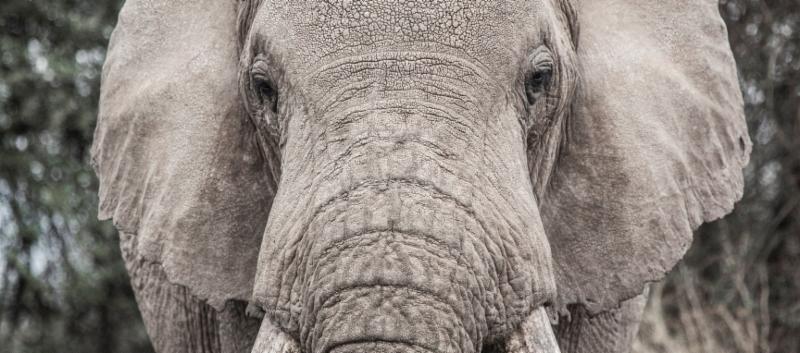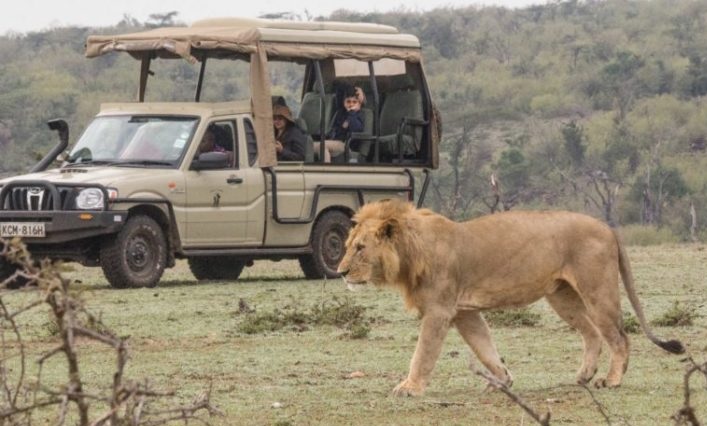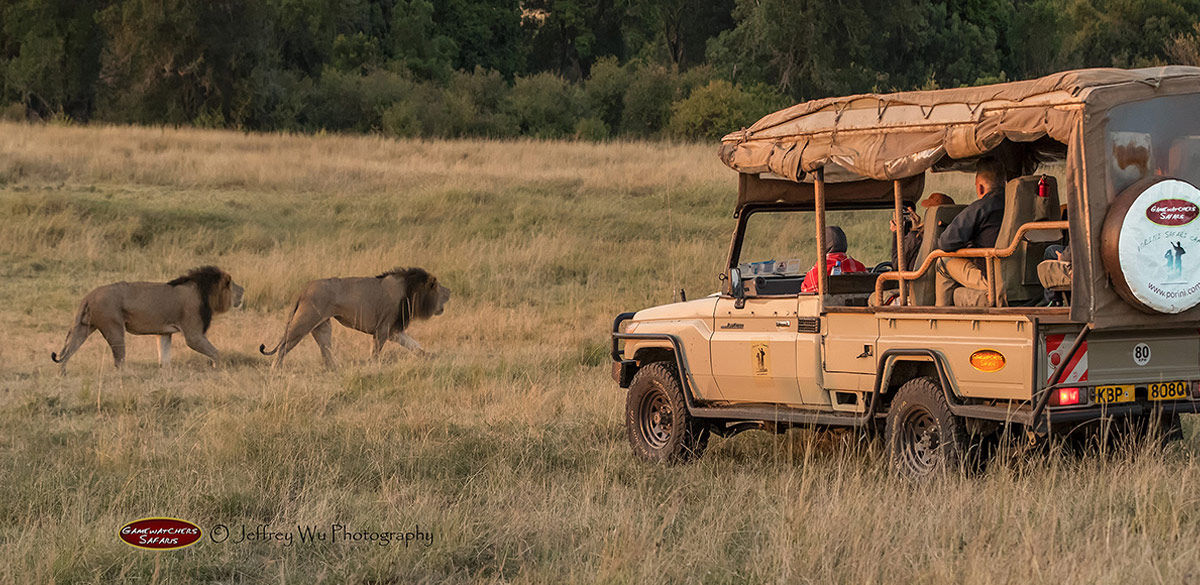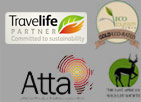
Many humans create problems for wildlife every day…
We generate tons of waste which pollutes the environment, we cut down trees and clear the bush to expand our own space in the world, humans engage in harvesting unsustainable quantities of marine life or in the illegal trade in wildlife products and some people even go so far as to illegally kill wild animals found within the farmed countryside or in areas used for livestock pasture.
Over time, these intrusions significantly decrease the amount of wondrous creatures we have on earth, including many in Africa.
Thankfully, awareness of these major problems is increasing, and more and more people are doing something to save our natural habitats and their inhabitants.
Here are 11 endangered or near-endangered animals seen on safari and the steps being taken to protect them for the future.
1. Only two Northern White Rhinos exist in the world – both of which are at Ol Pejeta Conservancy.
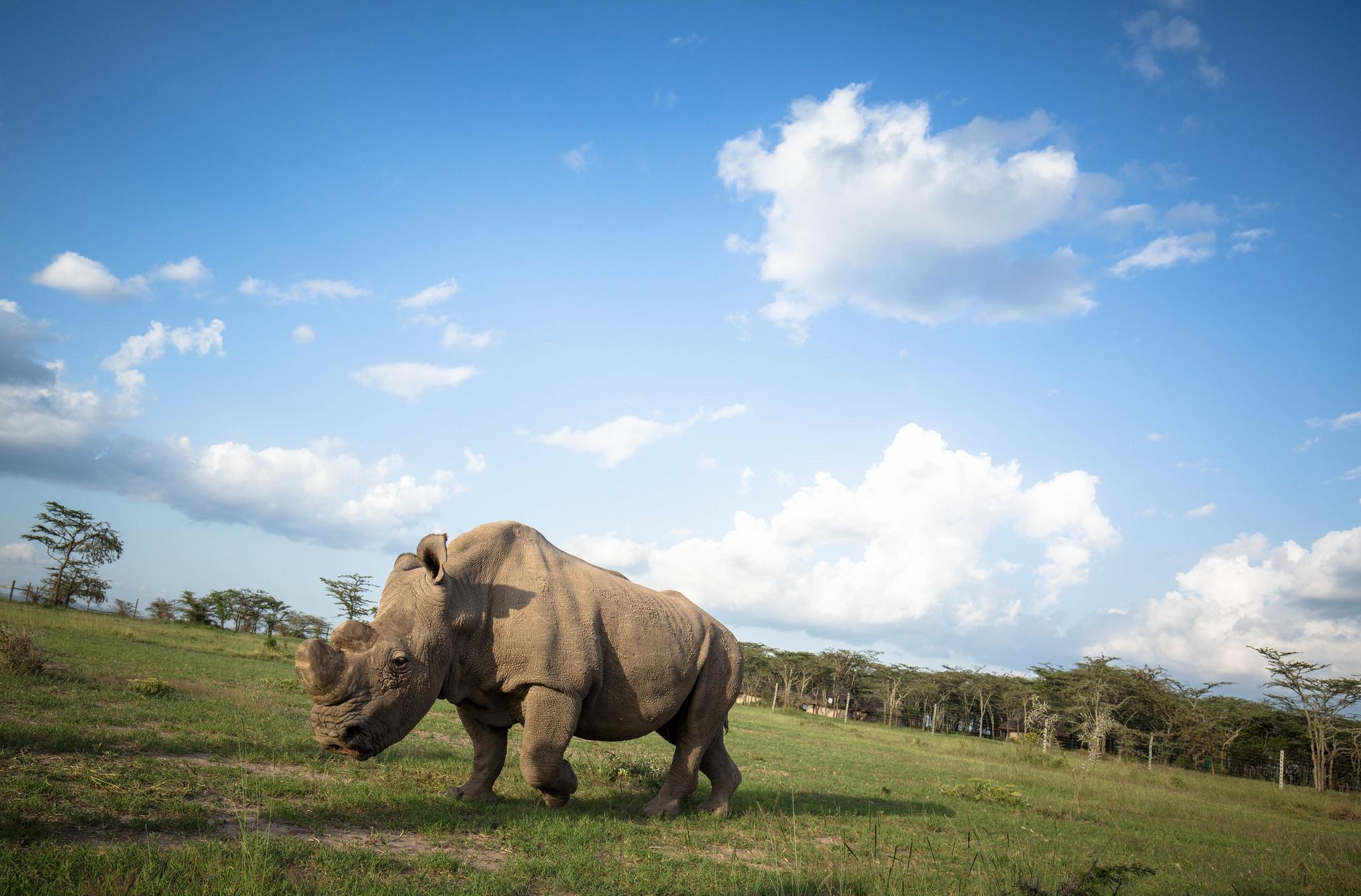
How did this happen? How did we get to this point?
Unfortunately, poaching during the 1970s and 1980s decreased the population of northern white rhinos to only 15 in the wild. While a minor resurgence occurred during the 1990s, poaching struck again in the new millennium, majorly damaging all progress made.
These days, only two female northern white rhinos remain: , Najin, and her daughter, Fatu. The small family lives at Ol Pejeta Conservancy where they are kept under guard 24 hours a day.
This spectacular species approaches extinction, unless science can step in and save the day. But for now, the conservationists at Ol Pejeta provide the best possible care for these critically-endangered animals.
2. Killed for its spotted fur, the African Leopard is near-endangered.

Mainly sought after for its soft and spotted coat, the stealthy African Leopard is facing growing threats to its survival.
But through the help of wildlife conservancies set up alongside the official parks and reserves, such as Olare Motorogi Conservancy, the land these big cats thrive upon is being expanded, providing a protected habitat where their numbers can increase.
Olare Motorogi is the peaceful setting for Porini Lion Camp. Income from tourism directly supports the upkeep of the conservancy and the people of the local community. And guests gain the benefit of seeing the African wilderness at its very best – unspoilt landscapes teeming with animals, and away from crowds of other tourists.
3. Giraffe populations decline by 50% in the last 30 years
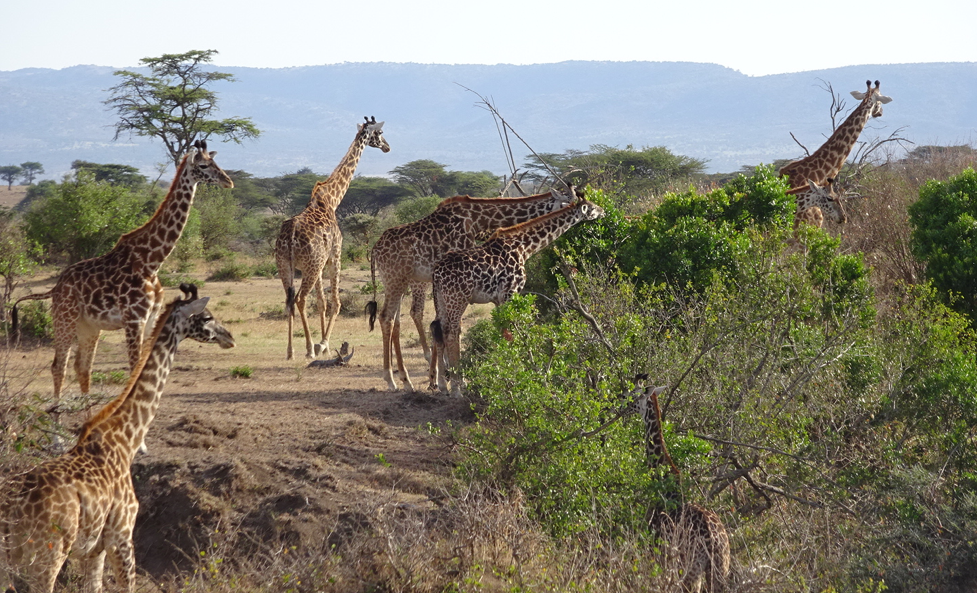
Giraffe populations are in serious decline across their former rangelands owing to habitat loss and poaching.
The Maasai giraffe (Giraffa tippelkirchi) was previously the most common but numbers have declined by 50% in the last 30 years and there are serious concerns that it is disappearing in many places owing to increased human settlement, farming and fencing which deprives it of space in which to live.
The Conservancies adjacent to the Masai Mara Reserve play a vital role in providing protected habitat where giraffes can survive.
In 2019 we hosted wildlife biologists, Dr Petra Campbell and Dr Felix Patton at Porini Mara Camp to enable them to carry out research in Ol Kinyei Conservancy. Their 18 day project was a “giraffe census” – a mission to identify / document the individuals within Ol Kinyei – and the findings were very interesting.
They found a total of 539 different individuals in Ol Kinyei Conservancy over the period that they were there and estimated that at least 300 giraffe are in the Ol Kinyei Conservancy at any one time. To read more, click here.
4. Unlike your household pet, the African Wild Dog struggles to maintain its numbers.

It’s sad to think that many countries have trouble finding homes for surplus numbers of domesticated dogs, and yet, the African Wild Dog is endangered. The African wild dog (Lycaon pictus), also known as African hunting dog, African painted dog or painted wolf, is a canid native to Sub-Saharan Africa and is now completely absent from much of its former range.
The good news is that in recent years, the African Wild Dog has been seen more frequently in many parts of Kenya, especially in the conservancies in Laikipia, Amboseli and the Mara such as in Ol Pejeta Conservancy where this photo was taken by Paolo Torchio. They have also been seen in Selenkay Conservancy (Amboseli region), home to our Porini Amboseli Camp. See: African Wild Dogs seen from Porini Amboseli Camp …
5. The Mountain Gorilla faces critical endangerment, mainly due to habitat loss.
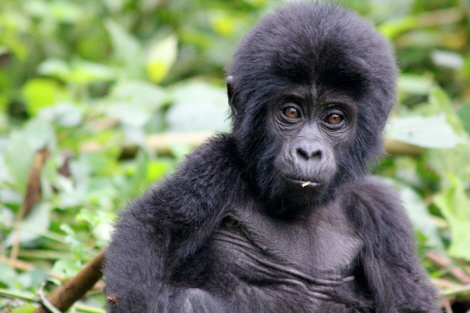
Dangers to the Mountain Gorilla include habitat loss, deforestation through charcoal making, and poaching.
Even if poachers do not specifically target gorillas, their snares for other animals can cause injuries to gorillas and damage the dwindling population.
How can you help these beautiful primates? Go on safari in Uganda or Rwanda. It is tourism that generates the revenue that is put right back into conservation efforts for the Mountain Gorilla. It’s really a win-win situation: you get to see the magnificent mammals, all the while helping to save them for future generations to come.
6. The king of the jungle, the African Lion, is increasing in numbers in some conservancies in the Mara.

The highest density of the African lion population exists in Ol Kinyei and Olare Motorogi Conservancies, both accessible through Porini camps.
Although they are still categorised as vulnerable, conservation efforts allow the big cats to flourish. Human negligence still threatens the king of the jungle, but with more responsible tourism, we can continue to build these populations back up to their full potential.
7. The population of Grevy’s Zebra declined by 50% in the last 20 years.

We are losing the Grevy’s zebra due to habitat loss and poaching for its spectacularly-striped coat. But not all hope is lost—this endangered subspecies of zebra thrives in protected areas such as Samburu National Reserve, Lewa Conservancy, Borana Conservancy and Ol Pejeta Conservancy.
The landscape may be more arid in some of these areas, but it is just right for the Grevy’s zebra which is adapted to survive in areas with less rainfall.
8. The Black Rhinoceros remains critically endangered after decades of poaching for their horns.
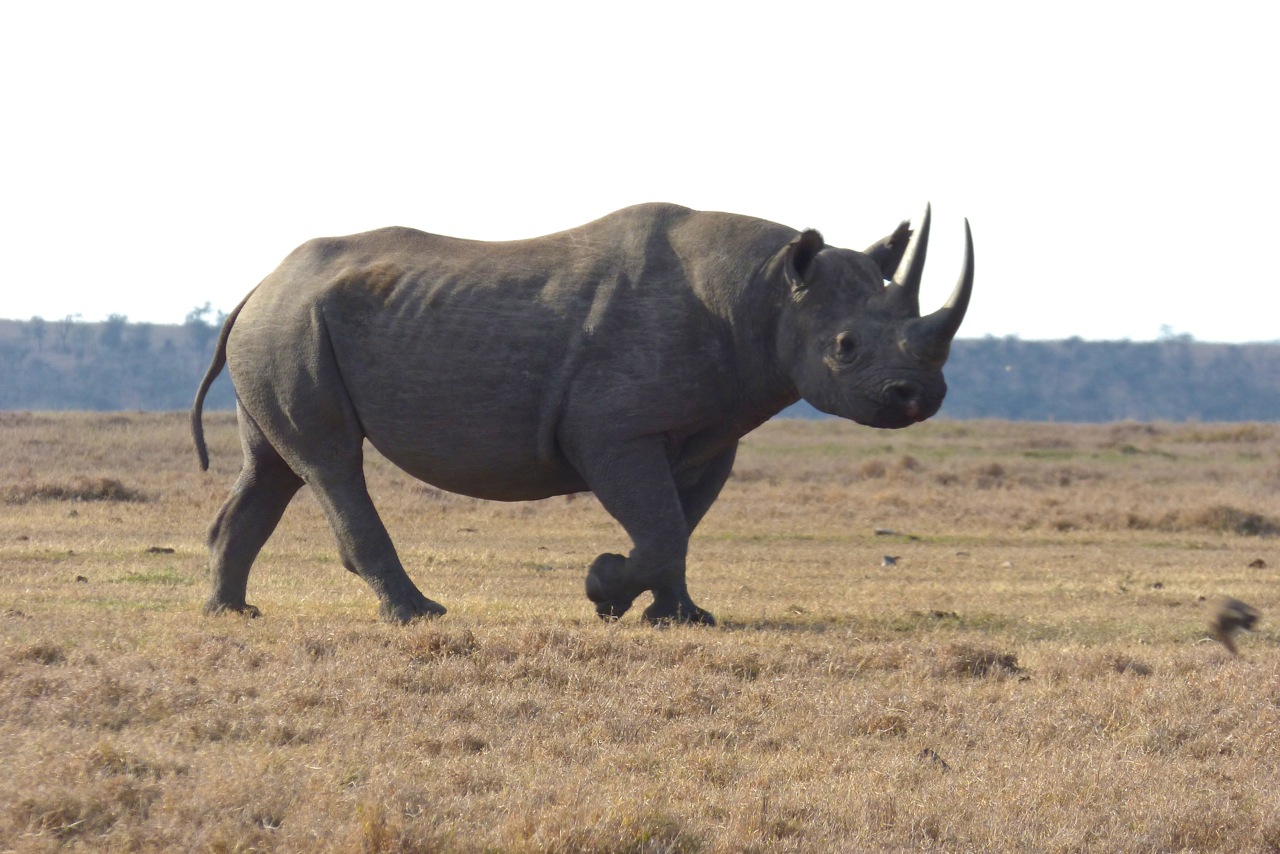
If you can believe it, the black rhino suffered an even greater decrease in population percentage than the Grevy’s zebra in roughly the same time-span.
From 1970 to 1992, 96% (yes, you read that right) of the black rhino population in Africa was eradicated. Today, the species remains critically endangered, though conservation awareness and efforts have greatly increased.
Places like Ol Pejeta Conservancy are doing wonders to bring back the black rhino. In just 10 years, the black rhino population at Ol Pejeta experienced an enormous increase to over 100 of these rare animals.
This is fantastic news for the species as well as for all supporters of conservation across the globe. Through eco-tourism and education programs, the black rhino can be given a better chance of survival.
9. The Cheetah quickly races towards being endangered.

Cheetahs have nowhere to run. They’re the fastest land animal, and yet, they are quickly running out of land on which to sprint. We still have time to keep the cheetah in the “vulnerable” stage and out of endangerment, but we must act.
Many cheetahs reside in the Masai Mara reach system of Kenya. The area is comprised of Masai Mara National Reserve as well as privately protected Conservancy areas surrounding the park. These safe havens, such as Ol Kinyei Conservancy and Olare Motorogi Conservancy provide substantial homes for the quick cats, and through tourism, you can help continue their growth.
10. Can you imagine a world without African Elephants?

We’d all agree that elephants are some of the most fascinating creatures on earth. We adore their long trunks, trumpeting call, and immense frame. Many humans also love their ivory tusks, but that love is a dangerous one. The elephant population suffered a huge decline due to high levels of poaching for their tusks to meet the increasing demands of the ivory trade. The greatest answer to this threat – discourage the trade in ivory and provide better protection for elephants in national parks and wildlife reserves while also expanding the protected areas through the creation of new conservancies beyond the park boundaries. The renowned elephant conservationist, Cynthia Moss, writes:
“The establishment of the Conservancies in Kenya has been the single most successful conservation initiative since the creation of national parks in the 1940′s. Conservancies protect land for Kenya’s wildlife and even more important create sanctuaries of safety. In addition conservancies bring benefits in the form of direct payments and jobs to the people who share the land with wildlife”.
Elephants can be seen in many parts of Kenya including Amboseli and the Selenkay Conservancy, Laikipia, the Mara and Tsavo National Park.
11. Don’t let the Aardwolf become an endangered species in East Africa!

What’s an Aardwolf, you might ask? The Aardwolf (Proteles cristata) is a small, insectivorous mammal, native to East and Southern Africa. Its name means “earth wolf” in Dutch and it’s in the same family as the hyena, looking very similar to a small Striped Hyena. However, unlike its close relatives, the Aardwolf does not hunt large animals. It actually mainly eats insects, especially termites. We see them from time to time in the conservancies where our Porini Camps are located: Ol Pejeta, Selenkay, Ol Kinyei and Olare Motorogi. The image of the Aardwolf in its burrow was taken in Ol Kinyei Conservancy by Paolo Torchio, and the image of the Aardwolf on the river bank was taken in Olare Motorogi Conservancy by Porini Lion Camp manager Jimmy Lemara.
Fortunately, ecotourism can produce an income for conservation that can help protect these unusual and less commonly seen animals.
Conservation is key…
The conservation efforts by some safari companies, such as Gamewatchers Safaris and Porini Camps, can make a big difference to the survival of these species by paying for their habitat to be expanded and protected. We can all play a part to ensure the wild animals of East Africa continue to be protected, by coming out on safari, as it is the income from safari tourism that helps to pay the costs of conservation.
If you would like to find out more information about seeing these animals yourself and staying at the Porini Camps, do get in touch and our expert Safari Advisers will email you suggested itineraries.
Or, if you are still researching your options then sign up for our free 6-part How to Book A Safari email series and discover how to make the most out of your time and budget.
on Monday 12th February 2018 at 11:38



